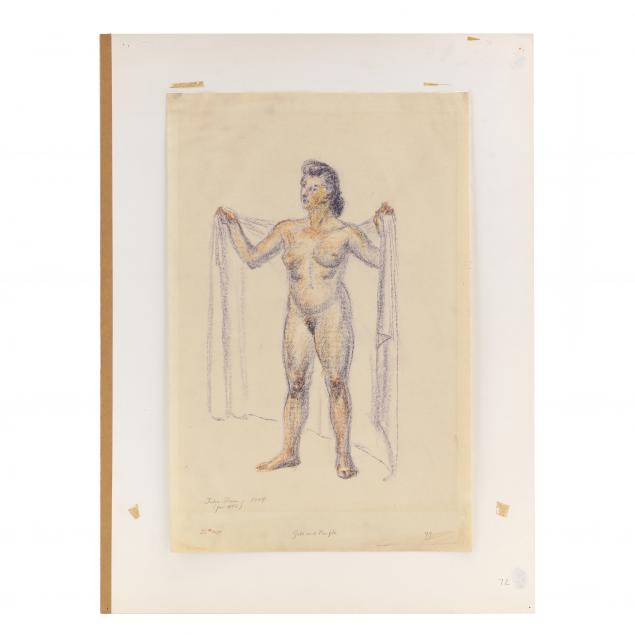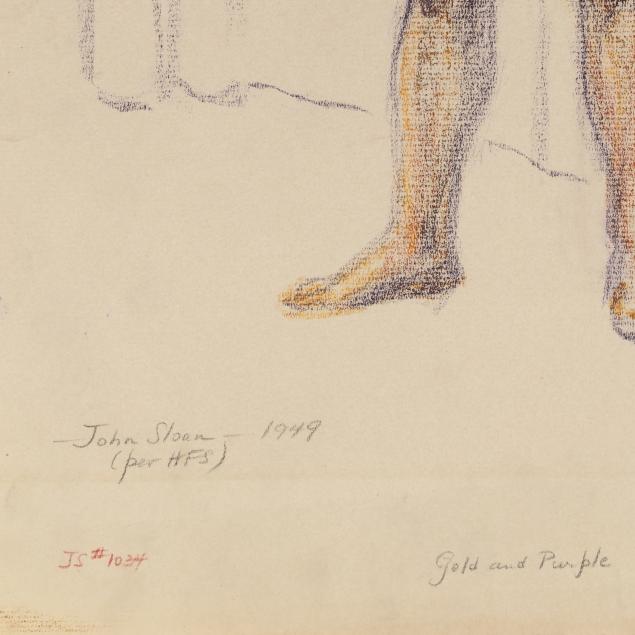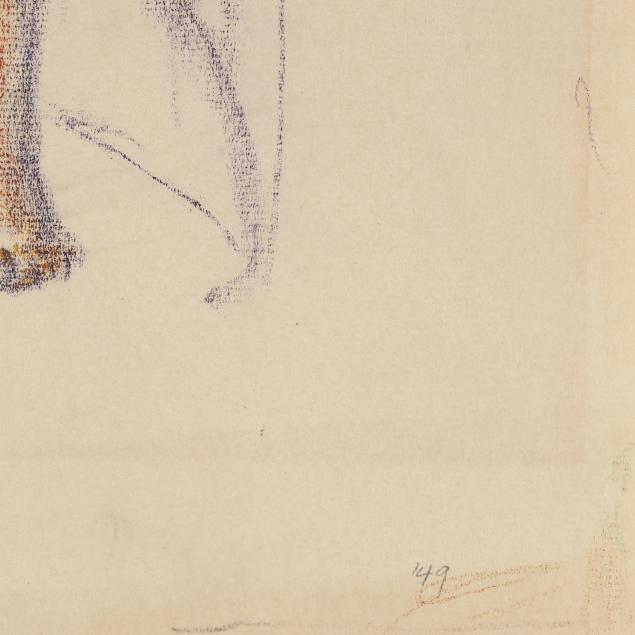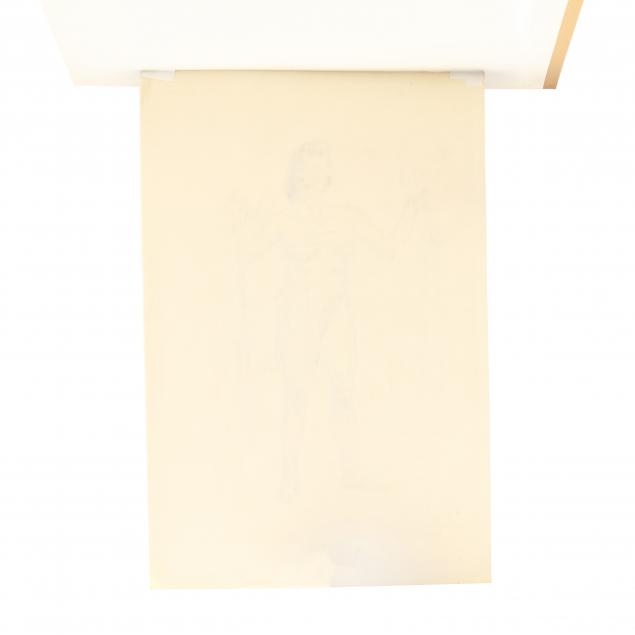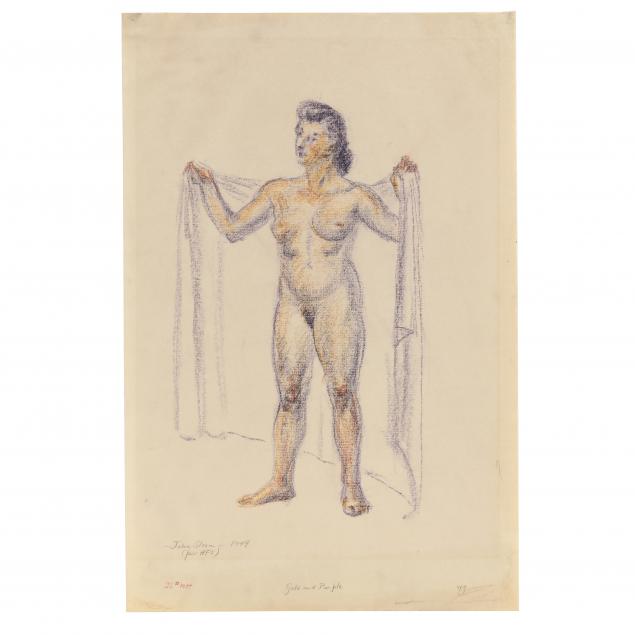
Lot 2227
John French Sloan (American, 1871-1951), Gold and Purple
Explore more items like this one.
Visit our Fine Art Department Fine Art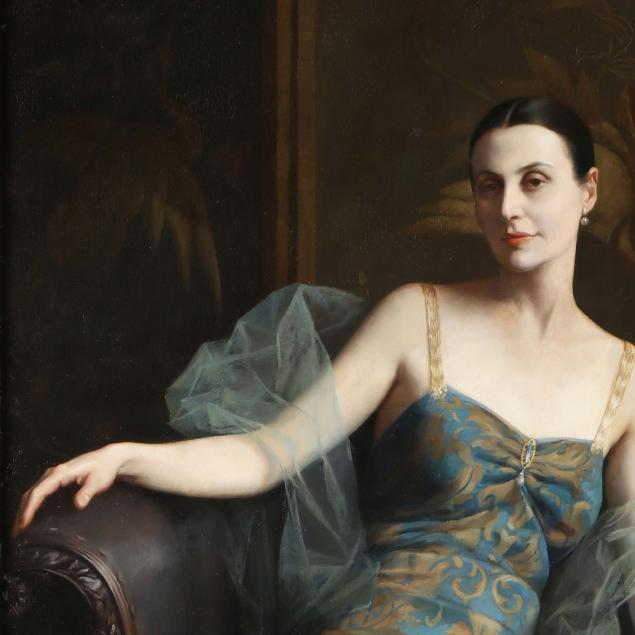
Lot Details & Additional Photographs
Sheet 19 x 12 1/2 in.
From the Collection of the late John M. Stratton, Greenwich, Connecticut
John Sloan stands as a central figure in the early 20th-century American art scene, making lasting contributions as a painter, etcher, and an influential member of the Ashcan School. Born in Lock Haven, Pennsylvania, Sloan's artistic journey began with a fascination for the visual arts, leading him to work as a newspaper illustrator. In 1904, he relocated to the dynamic landscape of New York City, where he found himself at the heart of the bohemian art movement. Collaborating with like-minded artists such as Robert Henri and George Luks, Sloan rejected the prevailing academic conventions, opting instead to capture the raw energy and authentic experiences of urban life.
Sloan's art became a poignant reflection of his social consciousness, portraying the struggles and triumphs of the working class. His notable works include "McSorley's Bar" (1912) and "Hairdresser's Window" (1907), both emblematic of his ability to encapsulate the diverse narratives found within the city's bustling streets. As a founding member of The Eight, a group of artists challenging the traditional norms of the National Academy of Design, Sloan played a pivotal role in the development of the Ashcan School. This movement sought to break free from academic restrictions and embrace a more genuine portrayal of everyday life, influencing the trajectory of American art in the process.
In addition to his prolific painting career, Sloan was a gifted writer and illustrator. His literary contributions to publications like The Masses and socialist magazines revealed a deep connection between his art and his social and political beliefs. Sloan's commitment to capturing the essence of American life, from the tenements to Greenwich Village, remains an enduring legacy, showcasing his versatility as an artist and his impact on the evolution of American art during a transformative period in history.
Light toning to sheet.
